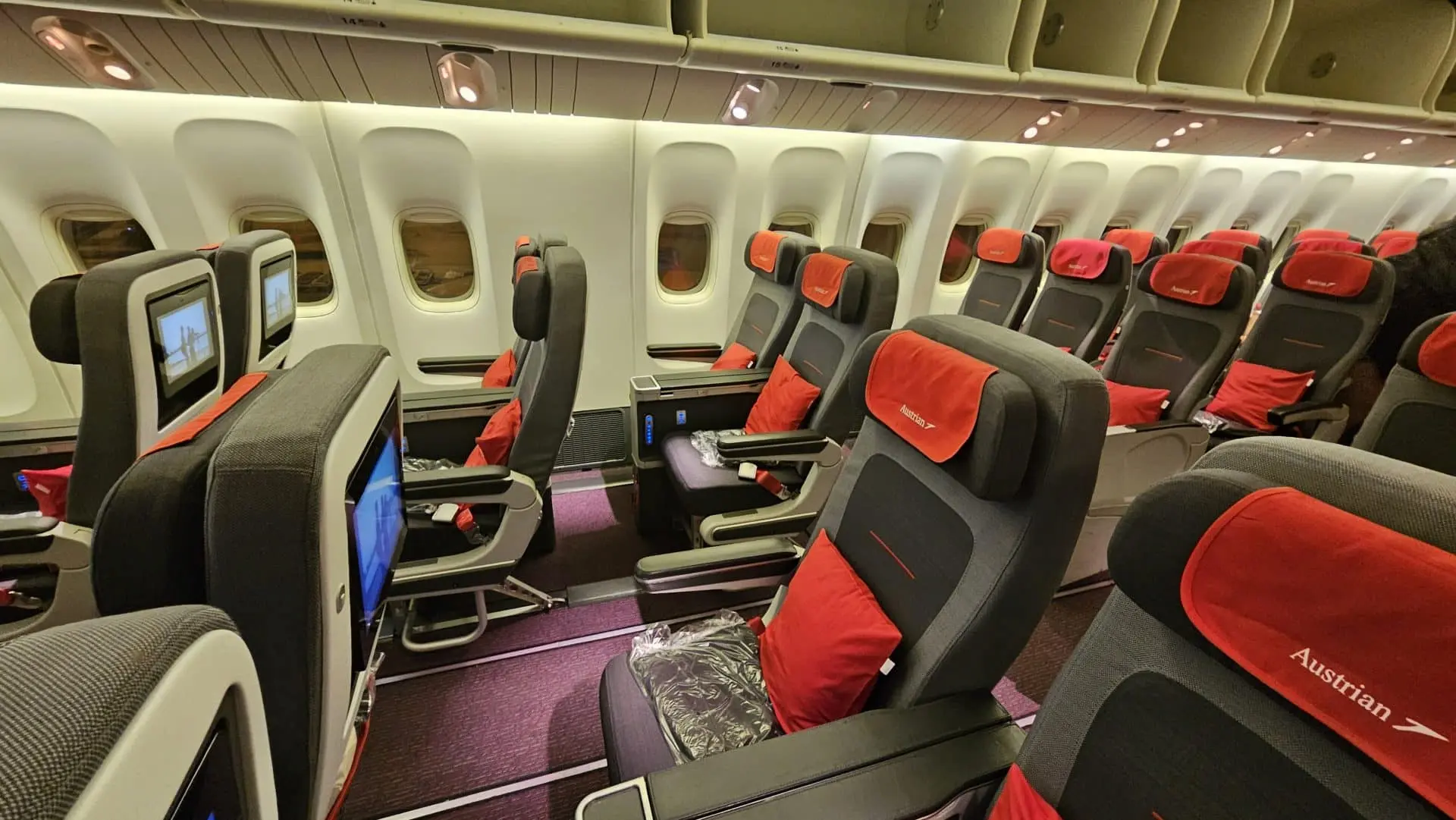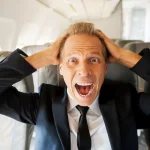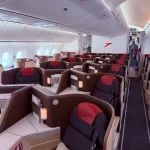I’ve flown nearly every premium economy cabin offered by European carriers, and Austrian Airlines has consistently stayed on my radar. While not the flashiest airline in Europe, it often surprises with solid attention to detail and service consistency. But let’s be honest, Premium Economy isn’t a small upgrade. You’re usually paying 70% to 100% more than Economy, and sometimes getting dangerously close to Business Class pricing during promotions.
So is it really worth the extra cost on Austrian Airlines?
In this detailed review, I’ll share my experience flying Austrian’s Premium Economy class on multiple long-haul routes, including JFK–VIE and LAX–VIE. I’ll break down what you actually get, where it excels, and where it could do better. If you’re debating whether to book Premium Economy on Austrian, this review will help you make the most informed decision possible.
What Does Austrian Airlines Premium Economy Actually Offer?
Austrian Airlines positions Premium Economy as a fully distinct product, not just extra legroom with a better meal. From the moment you check in, you’ll notice a separation in the experience compared to Economy.
There’s dedicated check-in, higher baggage allowance, early boarding, and a clearly defined cabin, usually just behind Business Class and separated by curtains. You’ll receive an amenity kit, upgraded meals, and significantly more personal space.
The seat design, service style, and soft product (meals, amenities, service) are tailored specifically for this class. It’s not a copy-paste from Economy with a wider chair. And that’s a critical distinction.
How Comfortable Are the Seats in Austrian’s Premium Economy?
Comfort is the heart of any Premium Economy offering, and Austrian delivers on most fronts. The seats are configured in a 2-4-2 layout on the Boeing 777s and 2-3-2 on the Boeing 767s. That means fewer middle seats, more side pairs for couples, and a quieter, more exclusive cabin feel.
The seats themselves offer:
- 38 inches of pitch (legroom)
- Around 19 inches of width
- A generous 8 inches of recline
- Adjustable legrests and footrests
- 12” entertainment screen
Economy on the same aircraft offers about 31″ pitch and 17″ width, so the difference is very noticeable, especially on overnight flights. I’m 6’2″, and I can stretch without crushing my knees against the tray table. That alone makes a 10-hour flight feel manageable.
The seat cushions are firmer than those in Economy, which I actually appreciate on longer flights, it reduces hip fatigue. The added recline also makes sleeping a real possibility, especially when paired with the amenity kit, which includes a pillow, blanket, and eye mask.
Is it a lie-flat seat? Of course not. But is it a drastic improvement over Economy comfort? Absolutely.
How Is the Food and Beverage Service?
This is where Austrian punches above its weight. The in-flight catering is managed by DO & CO, a premium caterer that also handles Austrian’s Business Class meals and lounges.
In Premium Economy, you’re not getting Economy meals in a fancy tray. You’re getting actual upgraded food, often with an Austrian twist.
On my last JFK–Vienna flight, dinner included beef goulash with spätzle, a side salad, a warm bread roll, and a very respectable marillenknödel (apricot dumpling) for dessert. It was paired with a glass of Grüner Veltliner, one of Austria’s signature white wines.
You’ll typically get:
- A full dinner after takeoff
- A lighter meal before landing (breakfast or lunch depending on timing)
- Free alcoholic beverages, including Austrian wines, beer, and spirits
- Austrian-style coffee service with dessert
The meals are plated with real cutlery and served on porcelain dishware, which adds a level of class you’ll appreciate mid-flight.
On daytime westbound flights (like VIE to LAX), the service feels more like a proper dining experience. On eastbound red-eyes, the emphasis is on speed and sleep, but the quality remains solid.
While it doesn’t reach Business Class presentation, the taste and presentation were far above Economy.
Is the In-Flight Entertainment Any Good?
Austrian’s entertainment system isn’t flashy, but it’s functional and well-stocked. Each Premium Economy seat features a 12-inch HD touchscreen, slightly larger than what Economy offers. The layout is intuitive, and the system rarely lags.
You’ll find:
- Around 300–350 movies and shows, with a good mix of Hollywood blockbusters, European cinema, and international options
- Several language options, including English, German, French, and Japanese
- Music playlists and podcasts
- A USB port and universal power outlet at every seat
The provided headphones are on-ear and noise-reducing, not full ANC (Active Noise Cancelling). If you’re picky about sound quality, bring your own. I always travel with Bose QC45s for this reason.
Wi-Fi is available for purchase and works decently over Europe and the Atlantic. It’s not fast enough for Zoom calls, but messaging and emails are stable. Pricing starts at around 3 euro and can go up to 18 euro depending on data needs.
What Does It Cost, and Is It Really Worth It?
This is the core question. How much are you paying, and what are you getting?
Here’s a price snapshot based on fares I tracked in 2024 and early 2025:
| Route | Economy Fare (Euro) | Premium Economy (Euro) | Business Class (Euro) |
| New York – Vienna | 450 | 840 | 2,300 |
| Los Angeles – Vienna | 500 | 970 | 2,800 |
| Bangkok – Vienna | 430 | 910 | 2,150 |
The Premium Economy fares are usually 70–110% higher than Economy. In some cases, if Economy is deeply discounted and Premium Economy isn’t, the price gap can be over 500 euro, which might make you hesitate.
But consider what you’re getting for that extra spend: more legroom, better sleep, significantly upgraded meals, more baggage, early boarding, and a quieter cabin. For a 10+ hour flight, those differences matter.
I personally find Premium Economy worth it when the upgrade costs less than 400 euro extra on flights over 7 hours. Any less, and it’s a steal. Any more, and you may want to look for Business Class promotions instead.
How Does the Service Compare to Other Airlines?
Austrian isn’t trying to be Emirates or Singapore Airlines. They focus on efficiency and consistency, and in Premium Economy, that works well.
The crew-to-passenger ratio is better than in Economy, and the flight attendants are trained to address Premium Economy needs separately. They’re generally fluent in English and German and remain highly professional.
Compared to Lufthansa’s more robotic service or British Airways’ sometimes spotty attentiveness, Austrian’s crew hit the right balance of warm and structured. Service feels personal without being intrusive.
When something goes wrong, delayed service, broken screen, seat issue, they’re quick to respond. That consistency is a major strength of Austrian across all cabin classes.
What Are the Downsides of Austrian Airlines Premium Economy?
While overall strong, it’s not flawless. Here’s what stood out:
- No lounge access: Unlike Business Class, Premium passengers do not get lounge access unless they have Star Alliance status or pay separately.
- Cabin can feel full: On my return flight, the Premium cabin was at 100% capacity, which removed the “exclusive” feel.
- No amenity kit: Just a small pillow, blanket, and headset. Other airlines like Air France or EVA Air offer small amenity kits in Premium.
Still, none of these were deal-breakers. For the price, it delivered as promised.
Who Should Choose the Austrian Premium Economy?
Based on my experience, Austrian Premium Economy is a great fit for:
- Tall passengers who need legroom but can’t justify Business fares
- Couples who want a quieter, more intimate flying experience
- Older travelers who need extra comfort for long-haul trips
- Business travelers who can’t expense Business Class
- Leisure travelers flying overnight and want better rest
It’s especially ideal on overnight transatlantic flights and routes over 9 hours. On short-haul or daytime flights, the benefits are less pronounced, but still present.
How Does Austrian Compare to Other Airlines’ Premium Economy?
Let’s benchmark Austrian against some key competitors:
| Airline | Seat Pitch | Seat Width | Meal Quality | Entertainment | Price Premium |
| Austrian | 38″ | 19″ | Very Good | Good | +70–110% |
| Lufthansa | 38″ | 18.5″ | Average | Good | +80–120% |
| British Airways | 38″ | 18.5″ | Good | Average | +90–130% |
| Air France | 38″ | 19″ | Excellent | Excellent | +100–140% |
Austrian outperforms Lufthansa in food and matches BA on seat comfort. Air France leads in aesthetics and polish, but fares are usually higher. If food quality, legroom, and calm service matter most to you, Austrian sits in a very competitive spot.
FAQs: Austrian Airlines Premium Economy
Is Austrian Premium Economy worth the extra money?
Yes, especially for flights over 7 hours where comfort and rest matter. The better seat, meals, and quieter cabin make a big difference.
Does Austrian Premium Economy get lounge access?
No, lounge access is not included. You’d need to purchase it separately or have status with Star Alliance.
Are the seats in Austrian Premium Economy lie-flat?
No. The seats recline 8 inches and have footrests, but they do not lie flat.
Can you upgrade to Business from Premium Economy?
Yes, you can bid for an upgrade or request one at check-in if availability allows. Prices vary depending on route and demand.
Is Wi-Fi free in Premium Economy?
No. Wi-Fi is available for purchase, with pricing starting at 3 euro.





